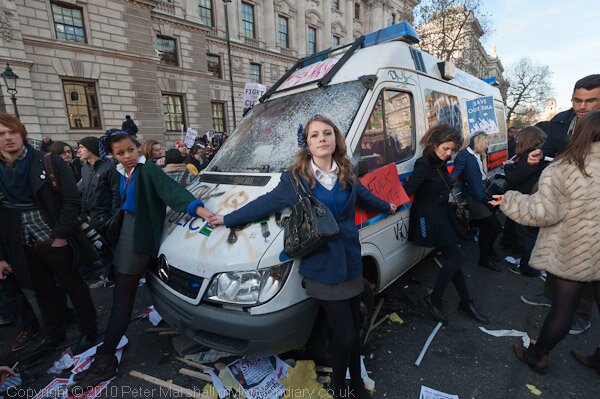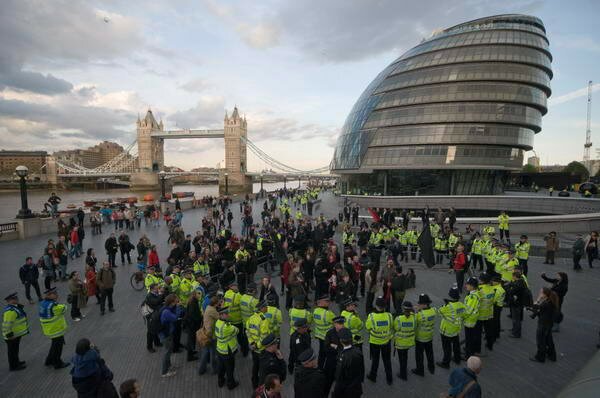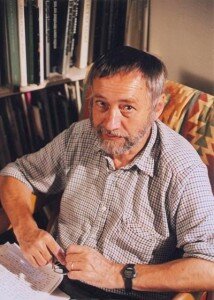Oomska’s ‘Future of Photography’ Series continues…
We presented our interviewees with a set list of questions, and left the matter of in what format and at what length they should answer entirely up to them. Here are Peter marshall’s responses.
1. How and when did you first become interested in photography? What was the trigger which led you to take a serious interest? How different would that trigger be now, with all the changes – technological and otherwise – in photography during the intervening years?
When I was a small kid around 1950 a we got a stack of old National Geographics from the 1930s passed on to us when a rather wealthier relative died. We used to spend hours looking at the pictures and decided I wanted to be a photographer. At 9 or 10 I was given a cheap plastic Brownie camera one Christmas by my oldest brother, a keen but very amateur photographer, and I was very disappointed when I took the film out of the back to find no pictures on it – with digital I would have been spared that disappointment! More seriously, I grew up virtually without money in a home where a film in the family camera had to do for at least two year’s annual holiday (they did get a dozen exposures after all) and that Brownie had been played with until it fell to pieces long before I could afford to make an actual picture. It was only in my mid-twenties when I got a real job that I could afford to take up photography properly.
2. Photography is often described as a mixture of art and science. It’s also a medium. How has digital technology altered the way these elements combine to produce what we think of as ‘photography’? Has technology altered that balance?
Digital has meant there are more people taking more pictures, but probably little or no increase in the number of pictures that I find interesting. Photography for me is about communicating ideas, not pressing buttons.
3. Prior to the introduction of digital, how much did the equipment you used change over the years? How has digital changed the way you use equipment? How would today’s technology, if you could have used it earlier, have changed your relationship with photography?
We’ve seen a rapid evolution in digital cameras, which for me has meant changing cameras a few times. With film cameras you could give them new life with new films (Fuji more or less re-invented colour with their improved neg films and paper in the 80s, and chromogenic and T grain emulsions revolutionised b/w.) With digital, cameras are becoming more like consumables. But having said that, in 30 years of film photography I probably bought or was given 30 cameras of various different formats and types, most of which I still have but never use.
I probably take 3 times as many pictures on digital as I did on film, and certainly it has made me more adventurous in technical respects as it has removed most of the risks. Where I might have stopped and decided if something was worth trying or not – like shooting direct into the sun, using a fish-eye, working in near zero light or a ‘Hail Mary’ – I now just do it and can see the result. The biggest technical difference is in low light, where ISO 3200 on a DSLR will now give results I would have struggled to get on film at ISO 400. Digital colour is just so much cleaner too. But there have also been other improvements in cameras, particularly in flash and image stabilisation, not just the change to digital. So in lots of ways we can push things a little further. But I think digital still has a long way to evolve – I’d love a digital camera that would give me the same kind of direct experience as my Leica M2.
4. How would photography’s great pioneers have embraced and utilised today’s technology? Might Ansel Adams be using software to stitch together panoramas of Yosemite? Would Garry Winogrand be using an iPhone? Would Eadweard Muybridge be experimenting with HDR?
Garry would probably still be waiting for Leica to produce a decent digital camera and hoping like me the next Fuji might do the job. I bought the M8 shortly after it came out to rave reviews from people who obviously hadn’t used it and think Leica should have recalled it and given us all a refund (my first job with it, a row of Muslim women in black burkhas came out unusable in various shades of plum.) So I wasn’t going to risk the M9, and given reports from some of my friends who did, I was right not to. I lost my main paying job two weeks after I bought the M8 (not as a result) so I could no longer justify the Leica premium either. Of course by the end I think he had lost interest in the results, was just addicted to the process, and given a year or two more would probably have gone entirely virtual rather than digital.
Ansel would I think have loved a digital back and have added another volume on it to his Basic Photo series (which would show people how to use HDR responsibly), as well as producing some seriously bad images with it and PtGui, but I don’t think it would have changed his aesthetic.
Muybridge would be in jail for murder if he was around now, but would have loved a Red Epic.
5. In some ways, digital seems to have ‘won out’ over film. Digital photography is everywhere, while companies such as Nikon and Fuji are discontinuing some of their films and film cameras. Is this process irreversible? Should we care?
I’ve always thought that in many respects photography peaked with the wet-plate process and it has been downhill all the way since. Film is now very much a niche product, and not one that lends itself to kitchen table production, so I’m doubtful about its medium term future, although sales are currently holding up better than expected. But it’s long since time it was abandoned in education where some courses that pretend to be vocational are still teaching outdated craft skills. Now it should be an ‘alternative processes’ option if at all.
6. Are there some qualities or aspects of film photography which digital will never be able to replicate or replace? If so, will these aspects of photography die with film?
I can still see myself using film for some very special projects, together with the Hasselblad Xpan or Horizon panoramic cameras, where capturing action is trickier with digital. But for most things, digital simply does it considerably better – even if for some odd reason you want a ‘retro’ look. And for the other things it isn’t that it is impossible with digital, just that there isn’t the market demand to mass justify production of suitable equipment.
7. Will the ‘camera’, as we (still) think of it, even remain as a distinct device? Or will ‘camera’ become just one of a plethora of multimedia features people expect to find on any number of hybrid consumer appliances?
We are likely still to have specialist tools for specialist purposes (and at specialist prices), but the mass market compact camera seems likely to go fairly soon – just look around at almost any event and see what most people are using to take pictures.
8. A few years back, Magnum photographer Eliott Erwitt was quoted as saying: “Digital manipulation kills photography. It’s enemy number one.” He also disdained digital in general, for its ability to produce “an image without effort”. To what extent would you agree or disagree with these sentiments?
A camera is a tool and you can use it in various ways. I generally don’t manipulate digital images, just do the kind of things I would have tried to do in the darkroom but with much greater control. In the end it’s down to the integrity of the photographer and not the process. That it takes less effort means it makes it easier to take bad photographs, not that it makes good photographs easier.
9. We’re all thoroughly weary of the ‘fix it in Photoshop’ approach. But defenders of digital post-processing often say, “Well, it only does what you used to do in the darkroom.” Is this a valid argument?
It rather depends what you do in Photoshop. With film I could choose which film (which gave me different colour or tonal palettes), vary development to alter contrast, chose the paper, vary the paper developer, dodge and burn, tone the image etc. I chose to use these possibilities to give particular results, and have always felt that if anyone looking at the print thought about the process I’d failed. The same applies with Photoshop – or rather Lightroom which usually does all I need for digital work.
10. For how much longer will the general conception of ‘photography’ refer exclusively to static, two-dimensional images? Imminently, 3D is looming, and ‘convergence’ – meaning not just the ability of modern DSLR’s to capture high-definition video, but the compulsion to make use of that functionality – is a current buzzword. Does this trend – photographers becoming film-makers, and vice versa – ignore the important divisions between static and moving images?
Film and photography demand very different ways of thinking about the subject, though some photographers can do both well. There will be less relative demand for still images in the future, probably less actual demand, so making a living from still photography is going to get harder. But many if not the majority of the photographers we revere most for their contribution to the medium actually made a living doing other work, not always photographic (or had families or backers that supported them.)
I hate the term ‘lens-based media’ because I think it puts together things that demand different skills, although the first serious work I did when I was a student was using TV cameras and editing live programmes on the university TV system. Certainly if I was young now and worried about making a living I’d be learning to work with a decent video camer
11. Cinema historian David Thomson, in his ‘Biographical Dictionary of Film’, wrote the following, regarding Marilyn Monroe: “She gave great still. She is funnier in stills, sexier, more mysterious, and protected against being. And still pictures may yet triumph over movies in the history of media. For stills are more available to the imagination.” How much more of a contentious statement does that seem today?
I don’t think I can see a still image of Marilyn. Even in the bad photos of her (and there are many) I still see her as a film star, so I think it’s a peculiarly inappropriate comment. Though what I’ve just written does very much illustrate the truth of the final sentence of his quote, “For stills are more available to the imagination.” The still image cuts a frame out of time/space and forces us to contemplate.
I’ve come to an end of the questions and don’t think I’ve said much about the future of photography. Perhaps because photography can mean many different things. It’s the basic tool of our current manufacturing technologies, the driver of capitalist consumption, increasingly a staple of the art market, appropriated by the education industry empire-building, and more. I’ve described it as one of the two defining media of the twentieth century (the other was film) and while perhaps for its first sixty years it’s major focus was places, in that century it became people, with photo-journalism at its centre. Although I don’t call myself a photojournalist, it’s still a mode I’m personally involved with in my own way. But like it or not (and I don’t much) I fear the twenty-first century for our medium will be the century of art. Mostly bad art.
Peter Marshall studied photography, media studies and film during a post-graduate teaching course and taught photography for 30 years, occasionally contributing photographs and articles to books and magazines. From 1999 to 2007 he wrote a photography site for About.com, (now a part of the New York Times group) and he is now a freelance photographer and writer. Work from his ‘London’s Industrial Heritage’ site was shown at the first ‘FotoArtFestival’ in Bielsko-Biala, Poland in 2005, and on environmental protest at ‘Foto Arte’ in Brasilia in 2007.
He now writes the >Re:PHOTO blog and My London Diary, which now includes over 60,000 pictures chronicling events and protests in the city for more than ten years. Other websites include those on the Lea Valley, the Buildings of London, Urban Landscapes and work from Paris. His most recent solo show was ‘The Secret Gardens of St John’s Wood’ last autumn, and the catalogue from this show and several other books are available on Blurb.



[...] questions, and I suspect the same is true about me – and you can judge for yourself in what is now part 10 of the series, with Carlein van der Beek, Tamara Bogolasky, Emma Jay and Nick Turpin also having [...]
[...] >> Go to Part 10 – Peter Marshall Q&A [...]